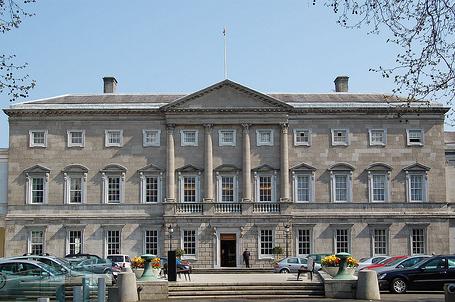Too many years of funking it on abortion legislation

Time and again Irish governments have shrunk from legislating for the conditions in which abortion could take place here. Enough. By Vincent Browne.
In February 1992 the Irish government claimed a diplomatic triumph in persuading our partners in the European Community to agree to a protocol to the Treaty on European Union which seemed to insulate Ireland from any interference, via European treaties or law, with our constitutional protection to the right to life of the unborn.
The treaty was signed on 7 February 1992, and a referendum was planned for later in the year. There had been an apprehension that without that protocol, the Maastricht treaty would have been defeated in a referendum here, even in spite of the €8 billion in structural funds that had been promised.
Abortion had been illegal in Ireland from 1861. In a judgment of our Supreme Court in 1974 on the contraception issue, the judges stated then and subsequently that abortion here was unconstitutional. Nevertheless, a head of steam emerged arguing the reasoning in the 1974 contraception case could apply sometime in the future to abortion. An explicit constitutional ban was demanded.
On 7 September 1983, the people voted, by a large majority, to ratify an amendment to the Constitution stating: “The State acknowledges the right to life of the unborn and, with due regard to the life of the mother, guarantees in its laws to respect and, as far as practicable, by its laws to defend and vindicate this right.” Game, set and match you might have thought? Not so.
In 1992 the European Court of Justice was drawn into the issue of abortion in Ireland and it held that an abortion, carried out in accordance with the law in a member state of the EU, was a “service”. The implication of this was that agencies in Ireland could disseminate information here about abortion services legally available elsewhere. And it was this development that propelled the demand for the protocol to the Maastricht treaty. Game set and match? Not so again!
Ten days after the signing of the Maastricht treaty there was a further convulsive development. The High Court granted an injunction, at the application of then attorney general Harry Whelehan, preventing an underage pregnant girl from travelling to England to have an abortion.
This was appealed to the Supreme Court, which ruled on the case unusually quickly. It found an abortion to protect the life of a woman who was suicidal – as was the case in this instance – was permitted by the 1983 amendment. But this did not resolve the issue.
On the one hand, the right-to-life camp was aghast at the “ease” with which abortion could now be permitted here; on the other, many people were disturbed at the implication a woman who wanted an abortion abroad could be prevented from travelling for that purpose. It seemed many Irish people wanted to prohibit abortions in Ireland, but didn’t want to go so far as to prohibit a woman from going abroad to have one.
There was much hoopla, not so much over abortion itself but over whether all this would derail the Maastricht treaty, because the carefully negotiated protocol seemed to copperfasten forever the apparent prohibition on a right to travel abroad for an abortion.
No game, no set, no match.
A frenzy of negotiations aimed at undoing this took place. The other European Community member states refused to renegotiate the treaty. Instead, they devised what was called a solemn declaration, which legally was entirely vacuous but which sounded good. It interpreted the protocol as not limiting freedom to travel and not interfering with the availability of information on abortion services in other member states.
In a further initiative, the government at the time (under taoiseach Albert Reynolds) instigated a further referendum on abortion, this time with three propositions: (i) that the threat of suicide should not be a justification for abortion here; (ii) that there was a right to travel abroad for an abortion; and (iii) that there was a right to receive information about abortion facilities.
The first proposition was defeated in the referendum, which took place on November 25th, 1992 (some people voted against because it “facilitated” abortion, others voted against because it restricted abortion). The other two propositions were carried and are now part of the Constitution.
The then Fianna Fáil government, via its minister for health John O’Connell, promised that if the first proposition was defeated in the referendum, the government would legislate on the conditions in which abortion could take place here. One of the Supreme Court judges in the X case had excoriated the Oireachtas for failing to do just that following the 1983 amendment. And that government funked it, as has every government since.
Legislation is needed to clarify the liability of medical personnel involved in abortions here; to determine up to what point in a pregnancy abortion is permissible; and to determine how and where legal abortions are to be carried out. It may also be necessary to define the meaning of the word “unborn” – ie, at what stage does human life begin.
That’s all aside of course from the central issue: the presumption of the State to require women to give over their bodies to the sustenance of other beings, irrespective of the physical, psychological and personal consequences to the women, which only they are in a position to determine.
Image top: stephen_dedalus.
